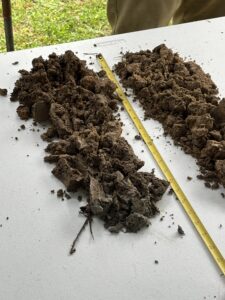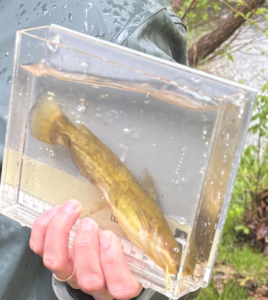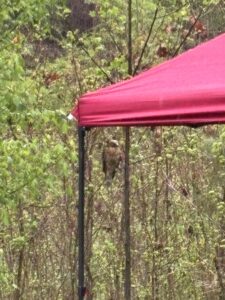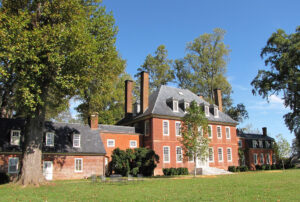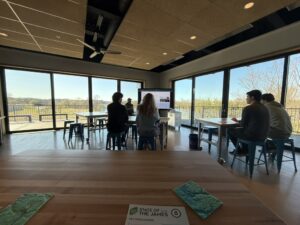Learning about the 2023 James River Report Card and collecting water data at the James A. Buzzard Education Center have significantly enhanced my understanding of how scientific research guides environmental policies and community efforts. Scientific findings inform policies and community actions by identifying and prioritizing areas of weakness through targeted funding and collective initiatives. They also increase individual awareness of the most pressing issues and encourage participation in programs that address these concerns.
During the water quality testing at the education center, I was satisfied with the dissolved oxygen, pH, phosphorus, and macroinvertebrate results of the river, but I was not pleased with the turbidity result. Although, understandably, the turbidity result was worse after heavy rainfall overnight, the high turbidity may also indicate issues, including combined sewer overflow and sediment pollution in the James River. On the report card, I identified three problems that require special attention from policymakers and our community: stormwater pollution, the declining or near-extinction status of multiple native fish species, and the significant amount of sediments in the river resulting from agricultural runoff and land development. Addressing these issues requires increased regulation, legislative funding, and community and individual initiatives.
The 2023 report card shows that the stormwater pollution controls only reached 33% of the 2025 target, and the sediment controls only achieved 45%. Stormwater pollution after heavy rains is caused by combined sewer overflows, as the combined sewer system overflows and discharges untreated or partially treated wastewater and stormwater into nearby water bodies. The discharged water into the river contains pollutants such as dirt, nutrients, bacteria, and chemicals, which harm aquatic species.
Actions from all levels should be enforced to mitigate stormwater pollution and the sediment issue. At the policy level, federal and state governments should allocate more funding to the City of Richmond to upgrade the combined sewer system and promote green infrastructure projects. More land development restrictions should be imposed to reduce stormwater and sediment pollution. At the community level, more green infrastructure projects should be implemented near streams to store stormwater runoff and allow it to infiltrate the ground. At the Buzzard Education Center, I learned about and observed various green infrastructure designs to prevent stormwater runoff into the river, including living green roofs, living walls, permeable bus loops and driveways, and native landscaping, which was exciting. (See figure 1 for two examples of green infrastructure near the center.) As individuals, we should raise awareness of the issue and actively participate in community events like tree-planting programs. Landowners should register for the James River Buffer Program to cover parts of their land with riparian buffers. These initiatives are also crucial in restoring fish species in the James River watershed.

Figure 1: The permeable gravel driveway and the sunken green belt at the front of the James A. Buzzard Education Center can retain and infiltrate stormwater runoff.
Regarding the status of native fish species in the James River, the report card highlights the dire situation of American shad over the past five years and the declining populations of smallmouth and striped bass. Several factors contributed to these situations, including warming water temperatures, loss of habitats, dams, water withdrawals, invasive fish species (e.g., blue catfish), and overfishing. These factors suggest the measures required to protect or restore native fish species. For instance, planting more riparian buffers can help cool the streams and address the rising water temperatures. More scientific research can be done to investigate the habitats for American shad in other watersheds so targeted restoration efforts can be made to recover the species in the James River. The fish passage program run by the Department of Wildlife Resources (DWR) can remove more barriers for migratory fish species. The government can grant more funds for American shad restoration. We, as individuals, can participate in invasive species removal programs organized by the DWR to help catch more blue catfish and Alabama bass. Protecting and restoring native fish species is a crucial task for our community because these native species play an important ecological, economic, and cultural role in our society.

Figure 2: A sculpture of an Atlantic sturgeon at the front of the James A. Buzzard Education Center. Migratory fish species like Atlantic sturgeons and American shad play an essential ecological, historical, and cultural role in the U.S. Hence, protecting or restoring them in the James River is vital.
In conclusion, my experience at the James A. Buzzard Education Center taught me a lot about the implications of scientific research on policies and community actions. Scientific findings, such as the James River Report Card, inform us of the pressing issues we should prioritize in our watershed and provide guidance for policy implementation. We can work together to implement these measures strictly and make the James a healthy river for every species and an enjoyable place for our community.



